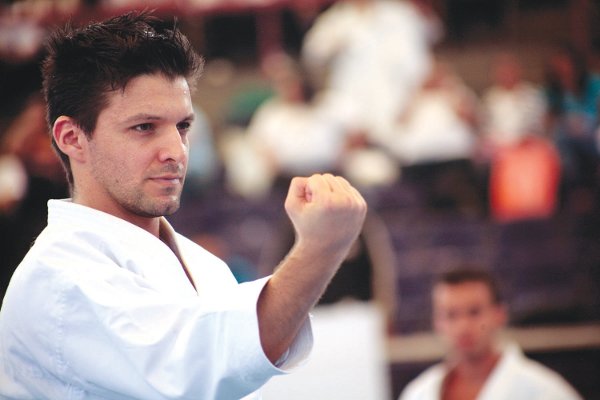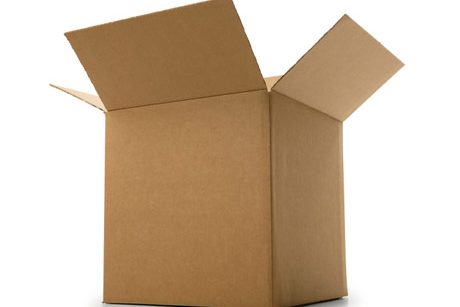Have you packed your bags?
Good.
Because we’re about to go on a journey together.
Swoosh! [imagine that you’re travelling very fast]
We are in Thailand.
Phuket, to be exact.
Stepping out of the airplane, we’re smacked right in the face with humidity. Not what we’re used to, but that’s okay, the heat is welcomed. After all, you didn’t pay anything for this trip – except your time.
But hurry up and grab your bags, there’s a guy picking us up. He’s waiting in his minivan outside.
After a while, we finally make it out of the airport safely, even passing some armed guards on the way.
A small chubby Thai dude suddenly catches our attention.
It’s our driver.
“Sawadee!” he exclaims, as he hurries to pop the trunk open. We forcefully stuff our bags in the car and quickly jump in. But as we’re sitting in the backseat, we immediately notice that this isn’t no ordinary pickup guy. There’s a big screen right in front of us that shows Thai Boxing highlights.
Or “Muay Thai”, as they say here.
In fact, this minivan has a pretty clear destination:
Tiger Muay Thai & MMA Camp.
One of the most well equipped fighting camps in Thailand, where you can do everything from Professional Muay Thai and MMA to Brazilian Jiu-jitsu, Submission Wrestling, Yoga and even CrossFit. And some other stuff…
“So why are we here, now again?” you ask me as we slowly roll out of the airport.
“Geez, how many times do I have to tell you? Don’t you ever read any history books? Okay, I’ll tell you again, but this is the last time. We are here, in Thailand, because every serious Karate researcher knows that Thailand was one of the first kingdoms that made good trading connections to Okinawa, and therefore influenced Karate in ways most people don’t have a clue about!”
You look surprised.
“What, you’re saying that Karate isn’t just old southern Chinese kung-fu stuff mixed with various indigenous Okinawan martial arts?”
I roll my eyes.
“That’s exactly what I’m saying!”
At this point I open up my backpack, which is in my lap, and pull out a big orange/yellowish book. “Okinawa – The History of an Island People” the cover says.
“Look, this book right here is a must for every serious Karate hobby historian. Have you seen it before? It’s written by George H. Kerr, and is considered something of a “Holy Bible” of Okinawan history. Everyone constantly refers to this groundbreaking book when they speak of Okinawan history and culture.”
“So?” you go, shrugging your shoulders.
It is obvious that you’ve never seen it before.
“You claim to be interested in Karate? You want to know what you’re really practising? Then let me show you a couple of pages right here” I quickly say, flipping through the tome in front of us.
You turn away to swiftly pick your nose, then turn back, pretending to be interested in this “super important book” I’m trying to show you.
“Look! For instance, here on page 74, we read that in 1425 the King of Okinawa’s middle kingdom (Chuzan) exchanged letters with the king of Siam! These letters make clear that an extensive trade between Okinawa and Siam had since long been established! It’s right here!”
“Siam, what’s that?” you suddenly say, perhaps looking a bit interested. I can’t really tell.
“That’s the old name for Thailand. In fact, during this period of great creative cultural activity, Okinawan trading ships were sent to Siam, sorry, Thailand, at least fifty-eight times, during a period of 146 years, though some researchers believe that hundreds of more unrecorded voyages were made too.”
Yes!
“Go on…” you say.
You’re listening.
“These ships traded everything with the Thai people: gold, copper, fans, wheat, gunpowder, porcelain, silk, paper, you name it! Even weapons of all kinds. Swords and knives worth thirty cruzados each, according to old Brittish adventurers. It’s all summed up here, in this book! However, the only thing they never traded were women, unlike the Chinese.”
You look out the window, pondering what I’ve said. We’ve drive up a small mountain road, and you can easily see far out over the bay.
The rain period makes the sky darken.

We’re almost at the camp now.
You turn back to me.
“Yeah, that’s cute and all, but what has this got to do with us? I only came to this country to kick ass anyway, not for a history lesson, grandpa!” you say jokingly.
“Look, you fool, in this heavy, super fantastic book on Okinawa’s history, the word Karate is only mentioned once! Can you believe it? Strange, right? ONCE! Here, on page 217, Kerr writes the ONLY reference to Karate in the whole book! And guess what he says?! It’s not what you’d expect, I’ll tell you that much. Here, just read it for yourself!”
I hand the book over to you, looking slightly irritated.
You read:
“It is noteworthy that songs, dances and festival sports incorporated many elements which came from overseas in the high days of Chuzan trade in the Eastern Sea; boxing (Karate) in which both hands and feet are used had come from Indo-China or Siam; “dragon-boat” racing from South China; the use of teeterboards from Korea…”
– G. H. Kerr, Okinawa – The History of an Island People (1958)
“You see what I mean now? In 600 pages of excruciatingly dry history, Karate is mentioned only ONCE in the whole freakin’ book, and when it finally IS mentioned, it is mentioned as a martial art hailing from SIAM! From Thailand! Can you believe it!? NOT China!
“Wow…” you say, staring at me blankly.
The driver peeks back at us. “Crazy foreigners…”, he seems to be thinking
Suddenly, you almost scream“That explains it all! I’ve never thought that Chinese kung-fu stuff resembles our Karate! It’s too… how should I put it… flowery! Yes, it’s too flowery and fancy! Karate is so much more hard and direct, and not as whimsical. I’ve always thought about that! Don’t you agree!?”
Finally.
I got you on the hook.
“Well, I’m not sure all kung-fu people out there would agree on that, but yes, I’ve had the same feeling occasionally.”
“Oh, and you know how kung fu places more emphasis on the open hand, while Karate always prefers the closed fist? I’ve always wondered where that difference came from!” you continue. “Maybe it’s from here!”
“Hello there, now we’re talking! I’m impressed! You’re actually smarter than you look! Yes, like you say, the Okinawans always preferred the closed fist over the open hand, as the heavy use of the makiwara clearly shows. Let’s remind ourselves what the legendary Kyan Chotoku sensei said, in a 1929 interview:”
“It’s important to understand the difference between Chinese method and Okinawan preference. The Chinese commonly use the tips of their fingers against an opponent while the clenched fist is chiefly used in Okinawa. It should be noted that the clenched fist is one of the fundamental differences that makes Karate a unique fighting method [when contrasted with its Chinese counterpart].”
– Kyan Chotoku, interview with Mutsu Mizuho, 1929
“Wow! I did not know that!” you say.
I slide closer to you, and lower my voice.
The driver gives me a strange look.
“Well, now you know. And there’s going to be a lot more of those things in the coming days, believe me. We’re going to see, and do some very special things here in Thailand. To be honest, you’re going to see some stuff that you might have a hard time to swallow, but in the end you will be happy that you did. Many people go their whole lives without seeing these things, even calling themselves Karate researchers or experts.”
“What, so now all of a sudden you’re a Karate expert?” you say sarcastically.
The car slows down.
We’re almost there now.
“No… I just want the truth.” I say, turning away, looking through the smudgy window at the distant mountains. I can see a big Buddha statue on top of one.
You feel bad.
“Okay, sorry, it was just a joke. I know you’re just thirsty for knowledge. So, if I’ve understood this whole trip right, we’re here in Thailand to find the “lost roots” of Karate, right? The missing piece of the puzzle, so to speak? Is that it?”
I turn around.
A devilish grin spreads over my face.
“Indeed we are.”
And that’s when the car stops.
“Welcome to Tiger, my friends!”
The journey has barely begun.



13 Comments